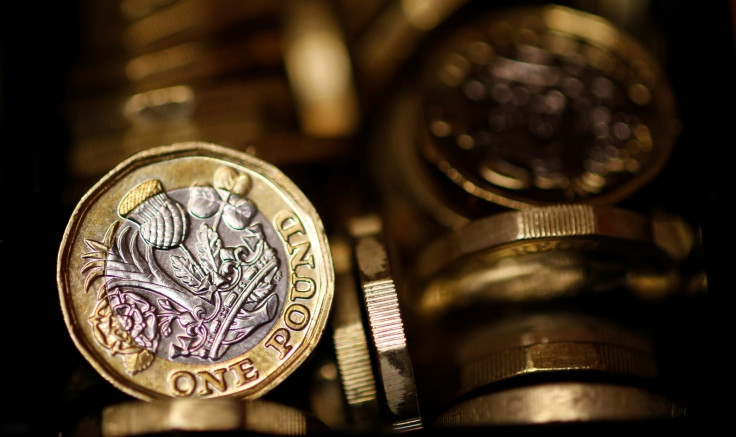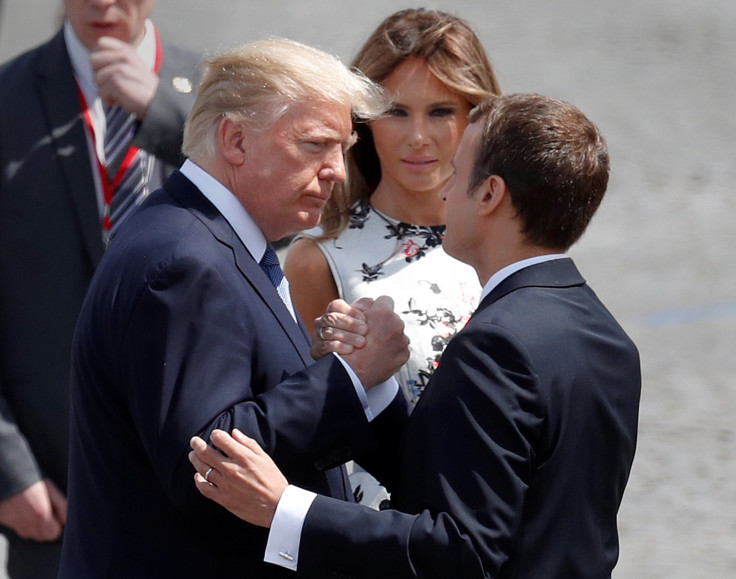Pound and the forex market in 2018: It'll be hard to disappoint pessimists
'Bumping along the bottom' is what the British currency did in 2017 and the same expression might apply to 2018 too.

The year 2017 is likely to be remembered as one of political discord, soft economic growth, rising prices and falling (real) wages in the UK. It's hardly heartening. From its post-financial crisis peak in August 2015, the pound fell by 23% in trade-weighted terms, reaching the low point during October 2016's 'Flash Crash'.
It's currently 6% above that level, after spending 2017 (so far) in a small range. 'Bumping along the bottom' is as good a way of describing this year's performance as any, and the same is probably true of 2018 too.
Sterling has two main sources of support: sentiment and value. As far as sentiment is concerned, the consensus view of the UK economic and political outlook remains downright gloomy.
Real GDP growth is widely expected to slow a little further, while Bank of England rates are expected to rise by 25bp to 0.75%.
This provides some support going forwards (it is hard to disappoint Puddleglums). Mind you, my colleague Brian Hilliard expects growth to slow to just 0.8%, and interest rates to remain on hold through 2018. So pessimism seems justifiable and maybe that is a reason to think that the pound can still plumb new depths.
Valuations are extreme. Sterling is 13% below its average level of the last 30years, and 7% below the lowest point it reached in early 2009. At these levels, it takes really bad news to get the currency even weaker - let's face it, that early-2009 low came soon after the Government bailed-out RBS and HBOS.
The Economist's Big Mac index tells us that London is a cheaper place for burger addicts than New York or Frankfurt, and the same is true if you're more interested in a cup of coffee at Starbucks. Just because the pound is 'cheap' on the basis of this kind of 'purchasing-power-parity' (PPP) measure, doesn't mean it will automatically recover, of course.
You'll pay twice as much for a non-fat latte in Zurich as in London today, but the gap has been huge ever since non-fat lattes became fashionable. All the valuation means is that it takes a lot of bad news to get the pound to fall much further.
The UK's two biggest trading partners are the US and the Eurozone. One of the big problems with the decision to leave the EU is that much more is traded with the Eurozone than the US and the euro has a weighting in sterling's trade weighted index that is more than twice that of the dollar.

That matters at the moment because while then pound is 'cheap', so is the euro. The OECD's estimate for PPP 'fair value' for GBP/USD is 1.44, 8% above current levels. The OECD measure for EUR/USD is 1.333, 13% from here, which argues that EUR/GBP fair value is 0.92 (or 1.09 in GBP/EUR terms).
The OECD paid for my education, so I owe them allegiance, but their estimate of a EUR/GBP is higher than I get from other versions, and I'd rather suggest that the pound is 'fairly valued' against the euro here than make the case that it is still expensive. But even so, that highlights the fact that the big currency adjustment that is underway, the euro's recovery, has further to go.
The euro has risen sharply from a very undervalued level. It reached its lowest levels at the start of 2017, over 25% below 'PPP'. At the time, the ECB (as has been the case for 3-years), was devoting its monetary policy largely to holding down the currency.
Negative interest rates and central bank asset purchases forced European savers (of which there are plenty) to buy foreign currency assets.
Meanwhile, as Marine Le Pen attempted to storm the Elysee Palace and become President of France, fears for the survival of the EU were growing, and on the other side of the Atlantic, there was much optimism about what the election of a tax-cutting, infrastructure-boosting and business-friendly Republican President would imply for growth and for monetary policy.
How things have changed! The Donald Trump Honeymoon has faded, and President Emmanuel Macron is in office. But most importantly, the ECB has announced the (very gradual) dismantling of crisis-era monetary policies. The Eurozone economy is growing fast than its trend rate, and faster than either the US or the UK. And the Eurozone still has a current account surplus of 3% GDP.

The big unknown when looking at where the euro is going, is how far into the future the market will look. Over the last 10 years, EUR/USD has averaged 1.29, pretty much as the same as the PPP estimate for that period.
Now that the Eurozone crisis is behind us, and given the size of the European current account surplus, it would be surprising if the average level of EUR/USD is lower in the next decade than the last one. And indeed, if we've seen 1.03 on the downside, would it be surprising to see levels above 1.40 in the next decade?
But that said, the rise from 1.03 to 1.18 has come with 10-year interest rate differentials above 2%, and with short-term rate differentials even wider, The Federal Reserve's balance sheet is shrinking, while the ECB has committed to go on buying through September 2018, partly because its President Mario Draghi is worried about the pace of the euro's recovery.
So, on almost any metric, the euro has bounced too fast from a very low level. From here, as growth continues, further gains are likely to take EUR/USD to 1.25-1.30 by this time next year. But the path will be anything but smooth.
The EUR/USD outlook is crucial for the pound. If the euro does gain 8% in the next year, on the back of solid growth, falling unemployment and building expectations of ECB rate hikes, it will also rise against sterling. 8% against the dollar would surely drag the euro by at least 4% against the pound (while the pound gained 4% against the dollar).
But in trade-weighted terms, the EUR/GBP rise drags the GBP trade weighted index down by more than twice as much as the GBP/USD rise lifts it. And even if the pound gets help against the dollar from a rising euro, the chances are high, that sometime between now and the UK's formal exit from the EU, we will see the euro and then pound trade very close to, or at, parity with each other.
Kit Juckes is the head of forex at Société Générale, having joined the French investment bank in 2010. A market veteran of over three decades, he has previously worked for ECU Group, RBS, Mitsui Bank and SG Warburg.






















